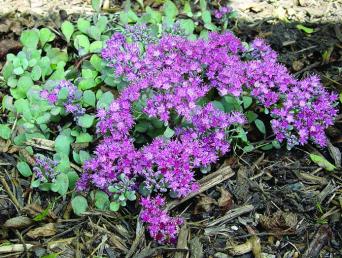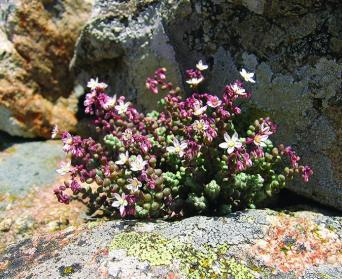
Botanical Names: It's Worth the Trouble to Get Them Right
Anyone who gardens should attempt to learn the scientific, or botanical, names of their plants (genus and species), along with their classification, families, origin, name meanings and perhaps any unique characteristics.
Common names of plants leave much to be desired. They vary geographically — the same plant can go by many different names throughout the United States. Common names in other countries, and other languages, may or may not match what we use in the United States.
The process of learning scientific names can be a slow one, but it is well worth the effort. Some record-keeping strategies would help. A simple notebook is a good place to start —any size, any shape, any style that can be kept handy. A loose-leaf notebook can be started with an alphabetical listing of your own plants. This is a bit more work but over time, you can add photos, update information and ultimately create a nice horticultural journal tailor-made to your garden.
Another method is to keep an A-to-Z list of genus names along with the appropriate plant family. Then, another list with each plant family in alphabetical order, each listing the appropriate genus. This “two-list” system is cumbersome by hand but easily done with a computer.
Regardless of how long you have been gardening, a starting point can be made at any time. Knowing the two-part genus and species name will assist you in catalog purchases, internet confirmation and shopping in local nurseries.
Every plant has this two-part name. The genus name comes first and is always capitalized. The species name is next and never capitalized. Both names are usually written in italics.
The genus Sedum is a good example. The entire Sedum genus is in the Crassulaceae family, which also contains jade plants and hen-and-chicks. Sedums come in many sizes and shapes — there are over 600 species, many of them referred to by their common name, stonecrops.
Using the botanical name can eliminate confusion among the many species. For example, “English stonecrop” is actually Sedum anglicum (with white flowers), “yellow stonecrop” is Sedum reflexum (golden yellow flowers) and “shortleaf stonecrop” is Sedum cauticola (bright pink flowers).
But another plant also commonly called “shortleaf stonecrop” is actually Sedum brevifolium. It has white flowers.
Botanical names, generally derived from Latin or Greek, may also give a clue to the characteristics of a particular plant. Lavandula (lavender) is from the Latin lavare, “to wash,” from the ancient tradition of adding lavender to bath water. Achillea (yarrow) is named for Achilles, who used the plant to heal wounds. Salvia (sage) is from the Latin salvio, “I save,” referring to its various medical uses. Thymus (thyme) is from the Greek word for “fumigate.”
Each plant within the species basically looks the same. Some may be bigger, younger, have more or less flowers, better or worse growing conditions. Sometimes in nature, a variation can occur that is consistent within a species. These consistent variations are called “varieties” or “subspecies” and are written with non-italics “var” between the species name and the variety name. For example, Amaranthus tricolor var. salicifolius is a variety of amaranth with variegated leaves that are shaped like willow leaves — “salicifolius” is from “Salix,” the willow genus.
Once plants are being cultivated, they are no longer subject to “nature” per se and can be propagated so that a wide variety can be created within a species. Flower color, a dwarf growing habit, an amazing fragrance are examples of variations within the species. If these differences are continued and passed along by re-seeding or asexual propagation, the plant is called a “cultivar,” short for “cultivated variety.” Cultivar names follow the species name, always start with capital letters, are never italicized and contain single quotation marks, as in: Aconitum 'Blue Lagoon,’ Aquilegia caerulea ‘Red Hobbit’ and Penstemon ‘Mystica.’
And now some November chores
This is really a pleasant time to work in the garden. The days are mild, although there might be frost at daybreak. There is still plenty of work to do: weeding, mulching, turning compost piles, harvesting late vegetables, cutting back asparagus stalks and raspberry canes, cleaning up potager beds and adding compost for spring planting. There are still the last fallen leaves to be raked and shredded. All the while, each plant is preparing for winter dormancy.


